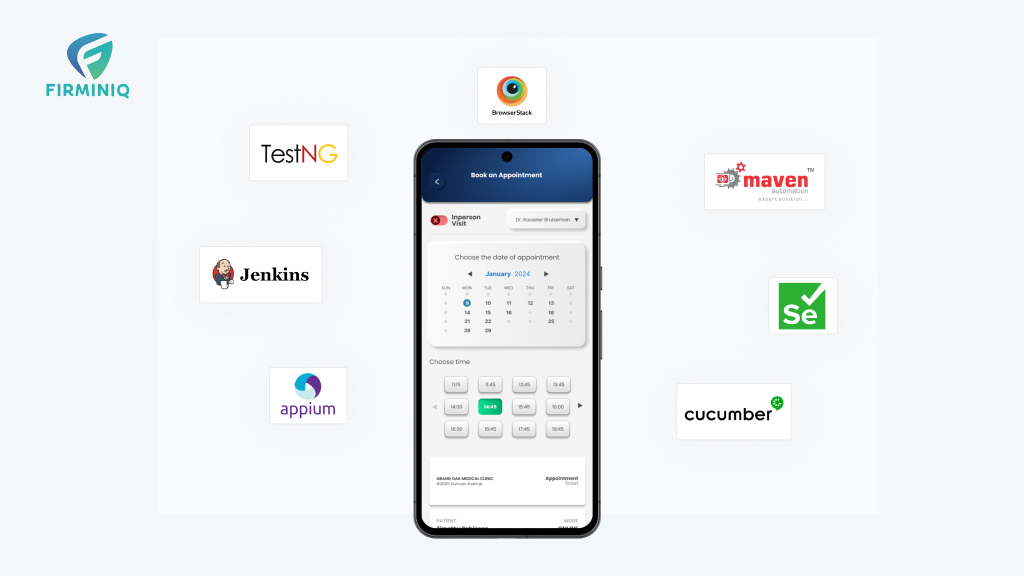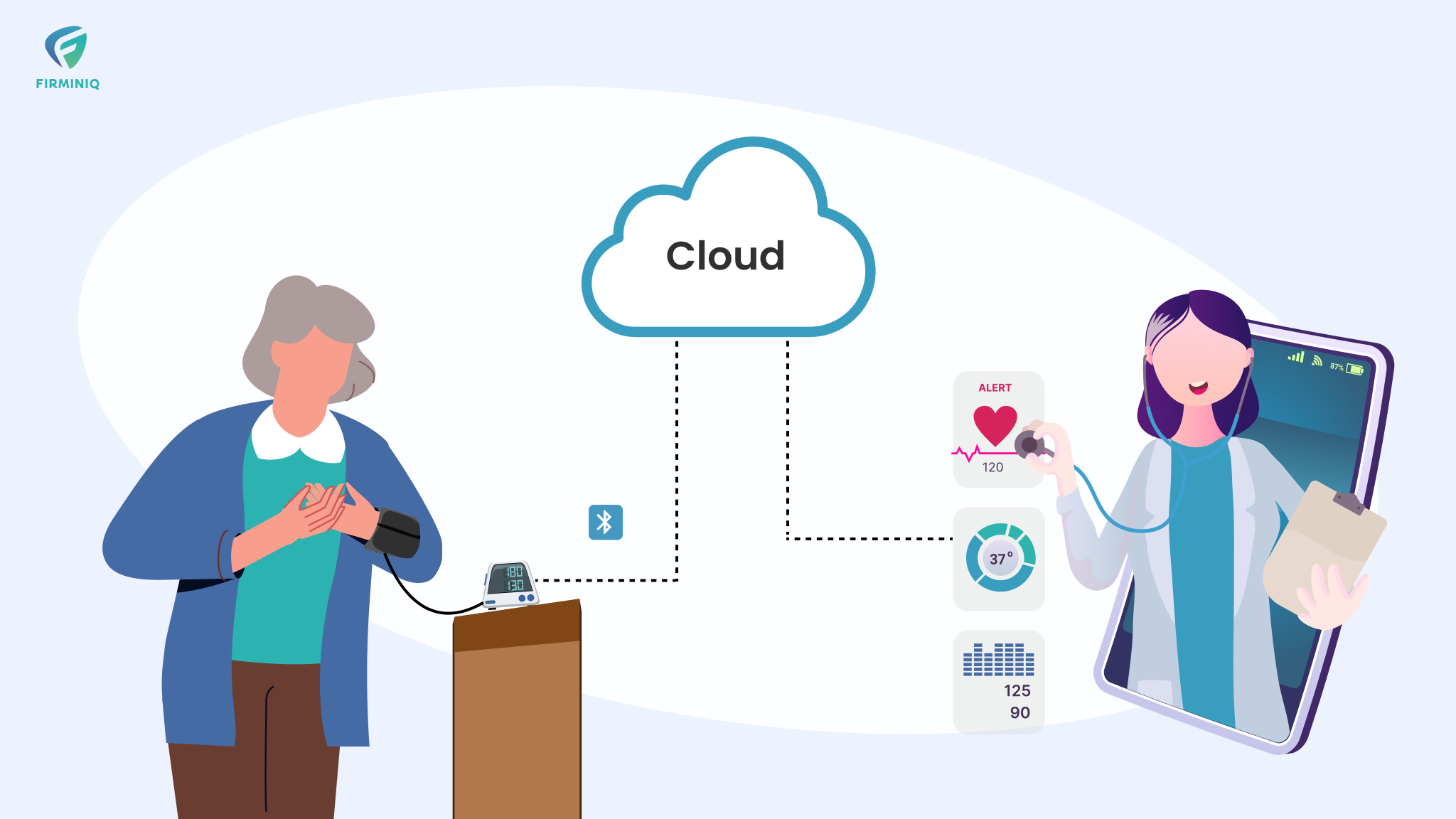The United Nations Department of Economic and Social Affairs reported that in 2017, the global population aged 60 years and older reached 962 million, more than twice the number in 1980. This number is projected to double again by 2050, reaching nearly 2.1 billion. With healthcare systems already stretched thin, how can providers ensure quality care without overloading resources? The answer lies in Remote Patient Monitoring (RPM) and Telehealth—technologies that are redefining patient care by making healthcare more accessible, proactive, and data-driven.
From real-time vitals tracking to AI-powered risk prediction, a well-designed RPM and telehealth solution can drastically reduce hospital admissions, improve patient engagement, and enhance clinical efficiency. But what truly makes an RPM system effective? In this blog, we’ll explore the key features that healthcare organizations should look for to maximize the benefits of remote care.
Enhancing Patient Care with RPM and Telehealth: Features That Matter Most
Comprehensive Patient Monitoring
An effective RPM system should facilitate the continuous monitoring of patients’ vital signs and health metrics, such as blood pressure, heart rate, glucose levels, and oxygen saturation. This real-time data collection enables healthcare providers to detect anomalies early and intervene promptly, preventing complications and hospitalizations. For instance, wearable devices can track blood glucose levels in diabetic patients or monitor heart rhythms in those with cardiovascular diseases. This continuous monitoring allows for timely interventions, reducing the likelihood of emergency situations.
Seamless Integration with Electronic Health Records (EHRs)
For RPM and telehealth solutions to be effective, they must seamlessly integrate with existing EHR systems. This integration ensures that patient data is centralized, easily accessible, and up to date, allowing healthcare providers to make informed decisions quickly. Moreover, it reduces administrative burdens and minimizes the risk of errors associated with manual data entry.
Secure and Compliant Data Transmission
Protecting patient data is paramount. Effective RPM and telehealth solutions must adhere to stringent data security protocols to ensure compliance with regulations such as the Health Insurance Portability and Accountability Act (HIPAA). This includes encrypted data transmission, secure storage solutions, and regular security audits to safeguard against potential breaches.
Customizable Alerts and Notifications
A robust RPM system should offer customizable alerts and notifications for both patients and healthcare providers. For instance, if a patient’s vital signs deviate from their normal range, the system can automatically notify the healthcare provider, prompting timely interventions. Similarly, patients can receive reminders to take medications or perform specific health-related tasks, promoting adherence to treatment plans.
Scalability and Flexibility
Healthcare organizations vary in size and patient demographics. An effective RPM and telehealth solution should be scalable to accommodate growth and flexible enough to adapt to different specialties and patient needs. This adaptability ensures that the technology remains relevant and effective across various healthcare settings.
Integration of Artificial Intelligence (AI) and Predictive Analytics
Incorporating AI and predictive analytics into RPM systems enhances their capability to analyze vast amounts of patient data, identify patterns, and predict potential health issues before they become critical. This proactive approach allows healthcare providers to implement preventive measures, ultimately improving patient outcomes.
Enhanced Patient Engagement and Education
Telehealth platforms should include educational resources and tools that empower patients to take an active role in managing their health. By providing patients with access to their health data and personalized feedback, these technologies promote better adherence to treatment plans and encourage lifestyle modifications.
Improved Access to Care
Telehealth eliminates geographical barriers, making it easier for patients in rural or underserved areas to access specialized care. Virtual consultations enable patients to connect with healthcare providers without the need for extensive travel, reducing delays in receiving care.
Robust Technical Support and Training
To maximize the benefits of RPM and telehealth solutions, healthcare organizations must invest in comprehensive training programs for both staff and patients. Additionally, having access to reliable technical support ensures that any issues are promptly addressed, minimizing disruptions to patient care.
Comprehensive Reporting and Analytics
Effective RPM and telehealth solutions should offer comprehensive reporting and analytics capabilities. These features allow healthcare organizations to track key performance indicators, monitor patient outcomes, and identify areas for improvement. Data-driven decision-making is essential for continuous quality improvement and demonstrating the value of telehealth initiatives.
Patient-Centric Design
At the core of any healthcare solution is the patient. An effective RPM and telehealth platform should be designed with the patient’s experience in mind, ensuring that it is accessible, culturally sensitive, and tailored to meet individual needs. This patient-centric approach fosters trust, encourages better engagement, and ultimately leads to better health outcomes. A well-designed RPM solution should support multiple languages, provide visual aids for those with limited literacy, and offer accessibility features for individuals with disabilities.
The Future of RPM and Telehealth
The adoption of RPM and telehealth is expected to accelerate as technology advances and healthcare shifts toward a more patient-centric approach. According to a report by MarketsandMarkets, “the global remote patient monitoring market is projected to grow at a CAGR of 12.7%, reaching $56.94 Bn by 2030, driven by the increasing prevalence of chronic diseases and the growing demand for home-based healthcare solutions.”
Moreover, AI-driven predictive analytics, wearable technology advancements, and blockchain-based security enhancements will further refine RPM and telehealth solutions, making them more efficient, accessible, and secure.
Empowering Healthcare with the Right RPM and Telehealth Solution
Implementing an effective RPM and telehealth system is no longer an option—it’s a necessity for healthcare providers aiming to improve patient care, reduce hospital readmissions, and optimize operational efficiency. By focusing on the key features discussed above, healthcare organizations can ensure they deploy a solution that is not only technologically advanced but also user-friendly, secure, and scalable.
At FIRMINIQ, we specialize in developing custom connected health solutions that integrate AI-powered analytics, seamless EHR connectivity, and robust security features. Our mission is to empower healthcare providers with the tools they need to deliver exceptional, patient-centered care. Contact us today to learn how we can transform your healthcare delivery.






